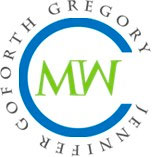Reducing the Likelihood of a Never ending Loop
During the past five months, my clients have almost constantly been changing their messaging and scope of projects as their customer’s needs and sentiment changes. The result has been a higher number of revisions because we are trying to meet a moving target. Or the exact opposite almost no revisions because the goal is to publish quickly.
Each time I have finished a project that had multiple revision cycles, I realized that in most cases that there were steps I could have taken at the beginning of the project that would have most likely reduced frustration on all sides. My goal is to proactively manage revisions, which sometimes I do a better job that others.
Here are five steps to reduce revisions and the number of revision cycles:
- Make sure that you are clear on the client’s expectations and the scope of the project. Have all parties who will be reviewing the document participate in the kickoff call. If members of the client’s team are not clear about the direction among themselves, ask them to come to an agreement on the deliverable and let you know what direction they decide. Try to stay out of differences among the client team if at all possible.
- Since tone can often be hard to capture, ask the client for samples of the tone and style that they are looking for. Either from past deliverables or if they are just starting, from other companies whose content they admire. I also find it helpful to see examples that they do not like as well. If the client has multiple examples on their website, ask them to send you links to the content that is particularly effective. Don’t just emulate content on their website without checking since brands often hire a writer because they are not thrilled with their current content and you don’t just want to automatically give them more of the same.
- Write an outline. I have found this to be an essential step in reducing the revisions and increasing my client satisfaction. At the end of the kickoff call, tell the client that you will write up an outline of the deliverable and have it to them to review shortly. If you are working with an agency that doesn’t have this as part of their process, ask if you can do an outline for your projects. This allows the client to see where you are headed before you get hours deep into it and make any course corrections at the beginning.
- Everyone signing off on the project reviews the outline and first draft. I then tell a funny story about how during a project we got to a version four of a 4K word ebook that was supposed to be a final signoff and when I opened it up it was littered with track changes. I said out loud to nobody, “Who the heck is Adam?” (And yes, I said something other than heck.) Apparently at the very last minute, someone had the idea to run the draft by Adam, who had not attended any of the project calls, and had not reviewed the very detailed outline or the previous THREE drafts. And of course, Adam had lots of opinions. As I’m telling this story, the client always laughs. I then say “So since then I ask my clients to have everyone who will be signing off on the final draft to review the outline and first draft so I never again have to utter ‘Who’s Adam?’” And of course everyone agrees to this, especially when illustrated with this funny story.
- Ask any questions that you have before you begin writing. Don’t write a single word until you are clear on the direction. If you have to schedule another call with the client for clarification, do it. The client would much rather take the time up front that receiving a document that isn’t what they were expecting.
- Ask client to review edits from multiple reviewers. You have not lived until you’ve seen an argument break out in the comments and track changes of one of your drafts. But your job isn’t to moderate or even untangle differences among reviewers. Ask your contact point go through the edits and resolve any contradicting revisions. This way you can stick to your job – making the revisions not play referee.
- Write a clause about revision cycles in your contract. One way to reduce endless revision cycles is to ask for a clause in your contract stating the number of revision cycles that will be included in your fee and stating an additional charge for each additional cycle. I personally offer unlimited revisions within certain conditions (read this article to see what I do), but I know many freelancers who offer two revision cycles and then charge per revision cycle.
Are you seeing higher revisions? What tips do you have for reducing the number of revision cycles in content marketing projects? Have any of the above tips worked for you?


[…] The client nodded and said he was open to anything that reduced revisions since they were time consuming for him as well. I explain that I want to create an outline, get a sample of the tone and have everyone signing off on the finished piece to review both the outline and first draft. During the call, I position this politely as my terms for working together. Check out this article for more details on these strategies for reducing the number of revisions. […]
Thank you. I’ve lost a lot of time to revisions recently. This is helpful.
Managing client expectations is a big part of keeping a project on track! It is also such a good idea to get sign offs and approvals during the different phases of a project so there are no surprises.